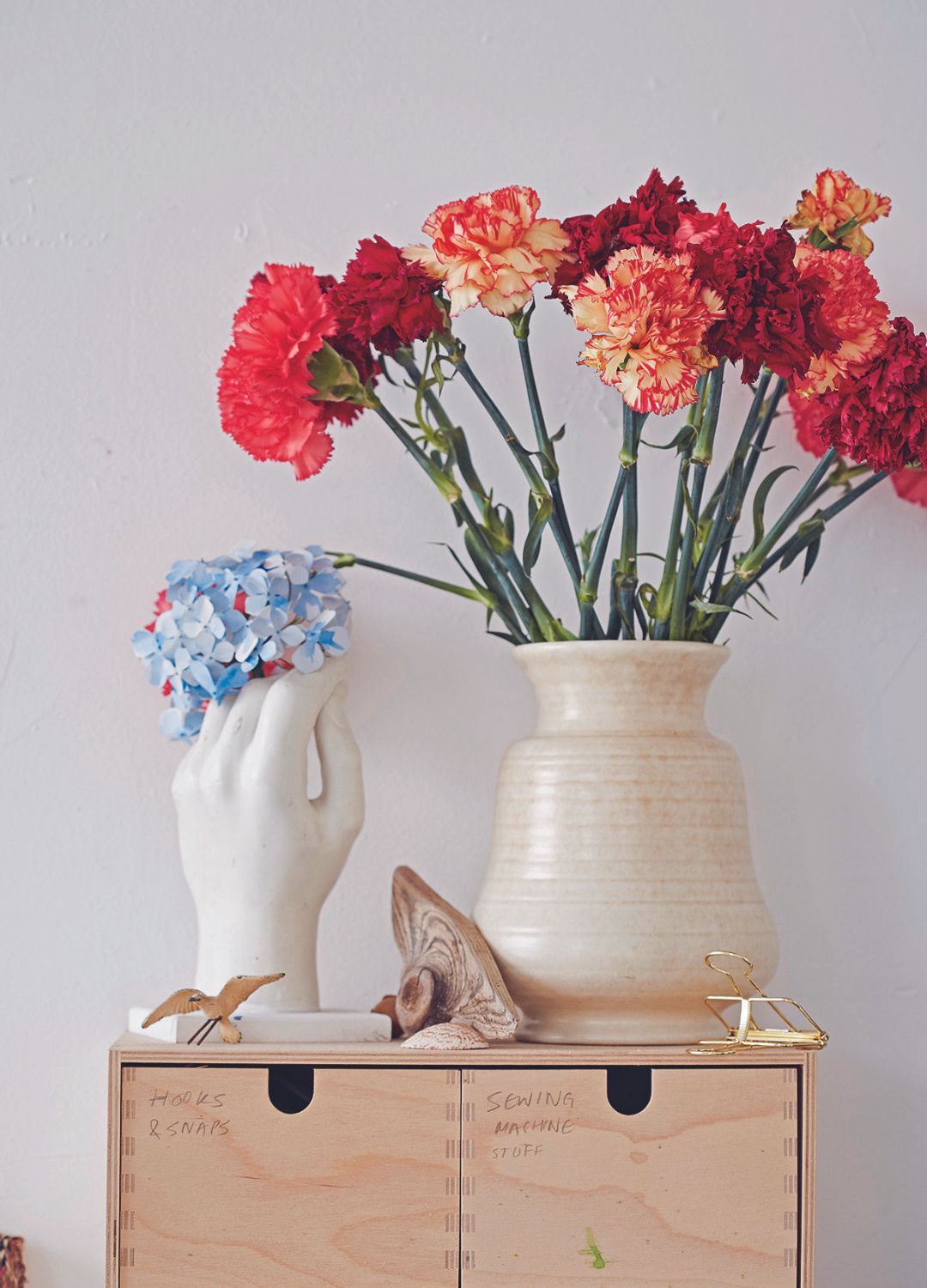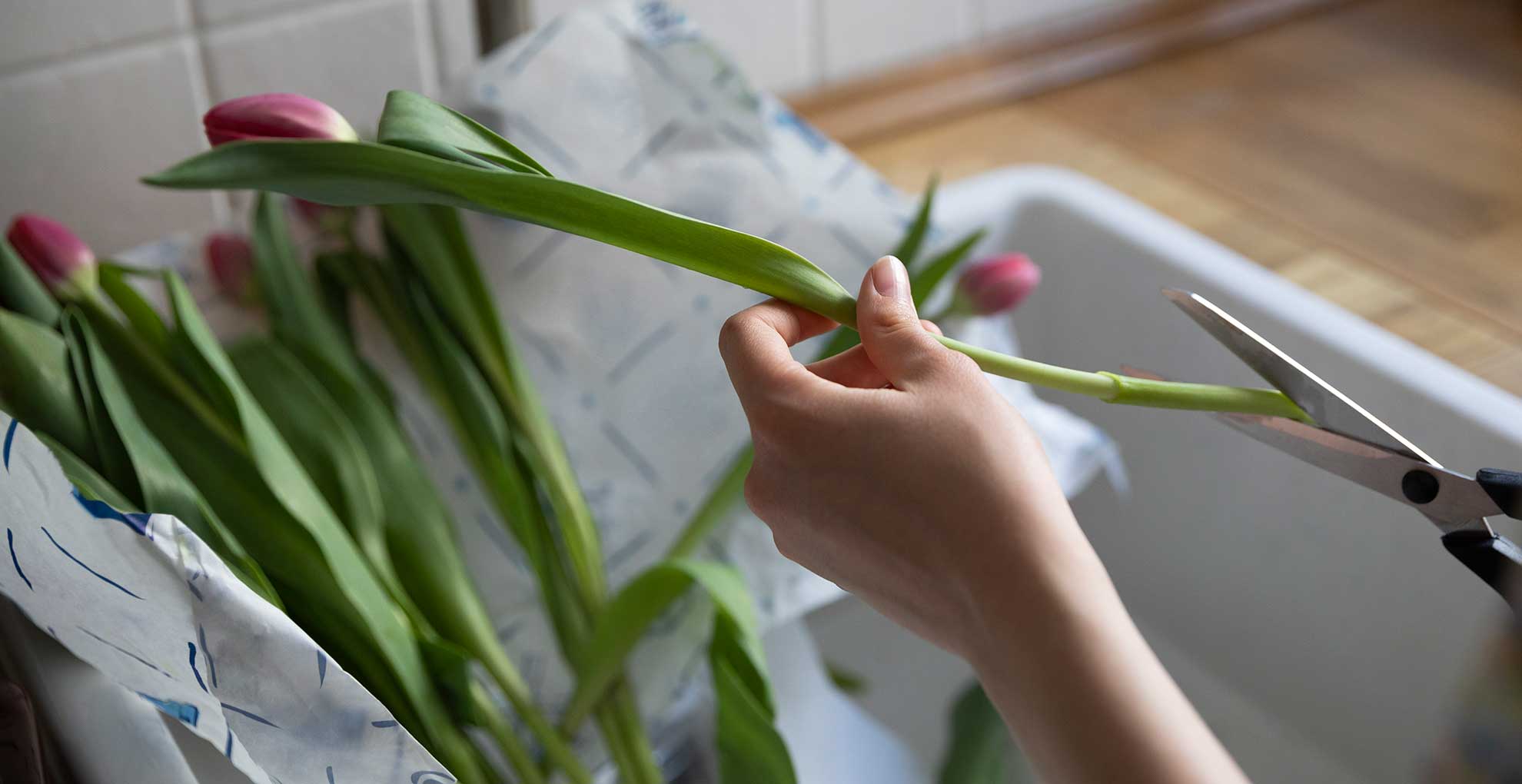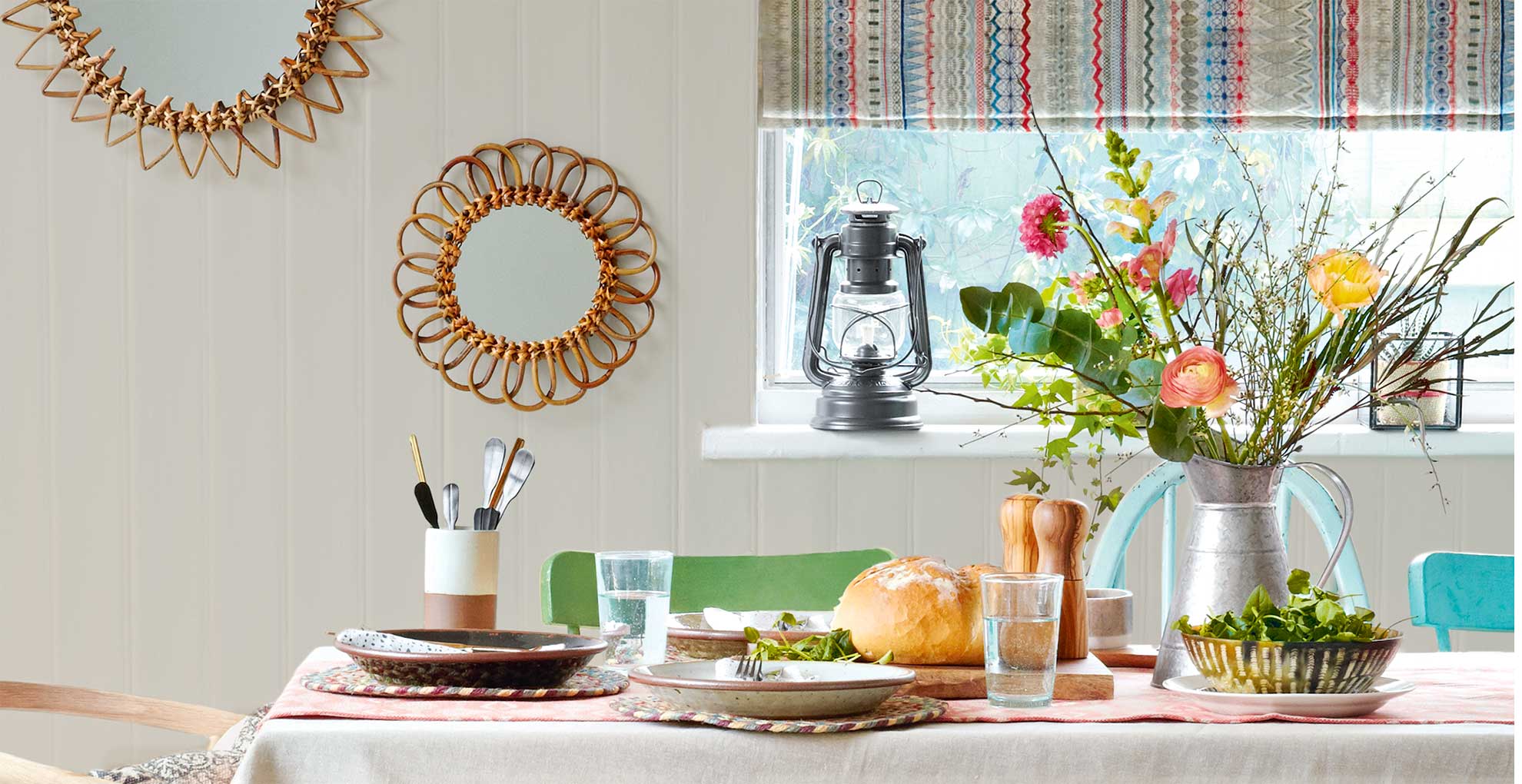
There's nothing quite as sad as seeing what was once a stunning bouquet wither and droop, especially when you only bought it days ago. Luckily, we've unearthed several insider floristry tips to help delay the dreaded dropping of petals and make your flowers last longer.
Whether you've received flowers as a loving thank-you gift, bought a bunch as one of the best gifts for mum or treated yourself as an easy way to make your home look more expensive a beautiful bouquet is always appreciated.
However, there's no hiding the fact that shop-bought flowers often don't last as long as you'd hope. Before you know it the petals begin to dry out and drop off, stems start to droop or yellow and you're left with a rather sad-looking display.
If your flowers aren't lasting the week without drooping then follow these steps provided by plant and flower experts. Your blossoming blooms will thank you.
How to make cut flowers last longer: 7 expert tips
Many of us may already think we know all there is to prepare a bouquet, however, there are several things that could be affecting the life span of your flowers without you even realising. And what's the point of displaying the best fragrant plants to make your house smell good if they're doomed to wither?
1. Choose a long-lasting variety

Before you've even thought about prepping a bouquet it's important to pick one that's actually made to last. Speaking to Julian De Bosdari, CEO of UK plant nursery Ashridge, he says, "One of the easiest ways to ensure the longevity of your flowers is to opt for a naturally long-lasting variety, chrysanthemums, carnations and orchids are more durable varieties that can survive for several weeks."
If you already know how to care for an orchid then there is a great flower to buy, however, should you not be up for the maintenance carnations are a beautiful alternative. Julian does warn against choosing the more delicate varieties such as tulips and peonies, these have a suspected vase life of around five days so will wilt quickly.
2. Start with a clean vase
Both the cleanliness and shape of your chosen vase can have a detrimental effect on your flowers. Julian explains, "Vases with narrow openings are typically harder to clean and are prone to trapping bacteria, which can contaminate the water and cause flowers to age and decompose quicker, so aim to use a vase with a wide opening if possible."
Similar to why you need to know how to clean plant leaves for houseplants, ensuring your bouquet is in a sanitary vase will prevent any nasty bacteria from seeping into the leaves. Plastic vases are also a no-no says Julian, as the porous material is more likely to hold that bacteria, instead opt for glass or ceramic both for hygienic and aesthetic purposes.
We found a stunning Minimaluxe-esque ceramic vase on Amazon for £15.99 and it has an easily cleaned wide opening.
3. Trim stems at an angle

This may perhaps be a tip that you've been using for years now, but there's good reason it's a tried and true piece of advice.
More often than not when you buy a bouquet from a supermarket or florist the stems are pre-cut and closed by the time you've got them home. This is why it's extremely important to the lifespan of your flowers that you cut them again.
"A flower's natural defence against being cut is to heal, meaning the stems need to be 'reopened' every few days," says w&h's home editor, Tamara Kelly. "The trick to make your flowers last longer, in addition to cutting the stems every few days is to cut in a more measured way. Snipping the stems at an angle provides a larger exposed surface area for the stems to drink in the maximum amount of water."
We recommend these Draper Floristry Garden Scissors at Amazon for precision pruning to make the cuts neat and clean.
4. Remove foliage below the water line
To keep your flowers smelling their best, it's a good idea to avoid any possible water contamination in the vase they're in from the get-go. You can't use a sad, wilting bouquet to scentscape your home.
"Any leaves or petals submerged in vase water should be removed as they can promote bacterial growth," explains Julian. "Bacteria can clog the stems, which obstructs water absorption and shortens the lifespan of your flowers."
Don't remove all the foliage though, anything healthy above the waterline can be kept as it will help preserve your bouquet and make it look as full as possible.
5. Keep flowers out of sunlight and away from fruit

Although you might be tempted to put your bouquet in the sun where it can brighten up a spot in your home even more, this placement can be detrimental to the flowers. Similar to why a peace lily's tips go brown, too much direct sunlight can cause damage to the flowers making them wilt faster.
Peter Ivanov, professional gardener at Fantastic Gardeners, explains how direct sunlight and heat will not only cause wilting but also encourage buds to bloom quicker which will shorten the bouquet's lifespan. "Place the bouquet in a cool location away from any direct sunlight, heating vents and appliances that generate heat, because they can cause the flowers to wilt more quickly," he says.
Interestingly Julian also warns against keeping your flowers anywhere near your fruit bowl, so if you're looking for ways to make your kitchen smell good then make sure your flowers are isolated from those bananas and apples.
"Ripening fruit such as bananas and apples produce an odourless gas called ethylene, which causes flowers to age and drop petals more quickly," states Julian.
6. Change the vase water regularly
Whilst you continue to check on your flowers and remove any wilting or damaged petals, it's also important to change the vase water regularly. No more leaving them to their own devices for days on end.
"Changing the water with frequency is essential when looking to prolong the life of your flowers to reduce the possibility of bacterial contamination," says Tamara.
"A top tip I was given at a Jane Packer Floristry course was to add a tiny, trace drop of bleach to the freshwater, to stop any trace of bacteria being fed directly to the stems of the flowers."
A quick and easy way to tell if the water needs changing is to see if the water appears visibly cloudy or has any debris floating in it, if it does then the bouquet needs fresh water put in.
7. Use nourishing flower food

Adding the provided flower food when preparing your shop-bought or florist-bought bouquet is no big floral secret. However, when you replace the vase water regularly, this food will be removed from the old water leaving your flowers without food.
"To extend the bouquet’s shelf life, aim to add additional flower food each time that you replace the water. If you can’t get your hands on proper flower food, don’t fret. You can make a homemade solution by adding two tablespoons of sugar and two tablespoons of white vinegar to one litre of lukewarm water," explains Julian.
The sugar in the solution provides energy for the flowers whilst the vinegar helps lower the water's pH level which will improve water absorption and help remove any nasty bacteria from the water.
If you're strapped for time and aren't up for the DIY solution, this 50-pack of flower food sachets from Floralife on Amazon is a great quick fix for just £5.64.
After using these steps to make the most out of your bouquet there are other ways you can save your most special floral arrangements. Should you receive flowers from a special someone or at a memorable moment in your life there is always the option to dry or press your flowers. That way you can cherish them for years to come and even display them in your Bloomcore home.
Or if you're looking for something a little more long-lasting to brighten up your home then house plants are the perfect choice. Especially if you chose one of the best houseplants for your health and wellbeing.







